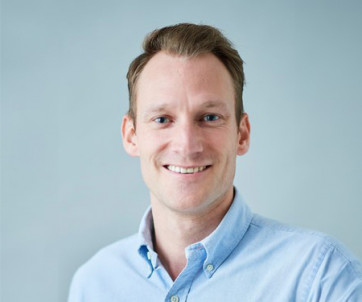
Recycling wind turbines: new milestone for the circular economy
Wind turbines already make a major contribution to climate neutrality. However, they minimise the ecological footprint even more if they can be recycled to a large extent and become part of a circular economy. A major breakthrough in the complete recycling of wind turbines was achieved by an international project that produced the first wind turbine blade that is fully recyclable. The Laborelec research centre, which belongs to ENGIE, played a key role in this sensational advance in rotor blade production.
Why do we need new rotor blades?
The wind energy industry is tirelessly searching for new ideas and material compounds for individual wind turbine components. The aim is to make these as recyclable as possible in order to make the repowering of wind turbines greener. Wind blades have posed a challenge to date, as there are still no industrial-scale recycling solutions for conventional versions. The material used cannot be reused for new blades and leaves behind a lot of waste after its useful life - a situation that the industry is not prepared to accept.
How did the ZEBRA project come about and what does it involve?
Whether generated on land or at sea, wind energy plays a crucial role in the global transition to carbon-free energy generation. With a product lifespan of 30 years and an 85 to 90 per cent recycling capability rate, wind turbines already present themselves as extremely sustainable. Nevertheless, the wind power industry has set itself the goal of closing the gap - an important step in this process is the development and production of the first fully recyclable rotor blades for wind turbines. To this end, the ZEBRA project was founded in 2020 and brought together numerous industrial companies and technical centres. As part of the project, two variants of wind blades - in lengths of 62 and 77 m - were produced using the recyclable thermoplastic Elium® resin, Ultrablade® GLAS-POWERED™ fabrics and, in the case of the 77 m blade carbon fibre were used and a shear web composed of recycled Elium® resin.
After numerous material testing and process trials, the first 62 m rotor blade made of thermoplastic resin was successfully produced in 2022. This was followed by the commissioning of the blade as well as life cycle tests, the recycling of production waste, the dismantling and recycling of the turbine blade and the analysis of the test results. In this way, the ecological and economic aspects of further utilisation of the thermoplastic material for future rotor blades will be assessed.
Prospect of complete recycling: wind turbines made from recyclable components
The invention represents a ground-breaking advance in the wind industry's drive towards a circular economy. The second Zebra blade, produced in July 2023, 77 m in length with shear web ade from recycled Elium® resin, also uses a new spar cap pultruded technology made from Carbon-Elium® resin and a new structural adhesive that can be recycled together with the Elium® resin. All analyses comparing the environmental impact of blades from the ZEBRA project and conventional thermoset blades should be available in the second half of 2024.
What's next for German and European wind farms
The project will have a major impact on the wind energy sector. Various consortia are currently emerging that are pushing to find solutions for used blade waste. The next steps on the road to wind turbine recycling are the certification of the ZEBRA blade and the establishment of pilot projects to evaluate the performance of the rotor blade in real-life situations. More and more wind farm operators are opting for easily recyclable options - it can therefore be assumed that rotor blades designed for recycling will take an increasingly large share of the market in the future.
The ENGIE research centre Laborelec is naturally using these pioneering achievements to build on them: In further research projects, the developers of the thermoplastic blade want to focus on working out ways to extend the service life of the new blade. Laborelec is also keen to develop solutions for recycling the current rotor blade waste. In this way, the complete recycling of wind turbines will gradually change from a dream of the future to an advanced reality.
Our Expert

Frederic is also cluster manager and technical advisor for the non-metallic materials group at ENGIE Laborelec.









